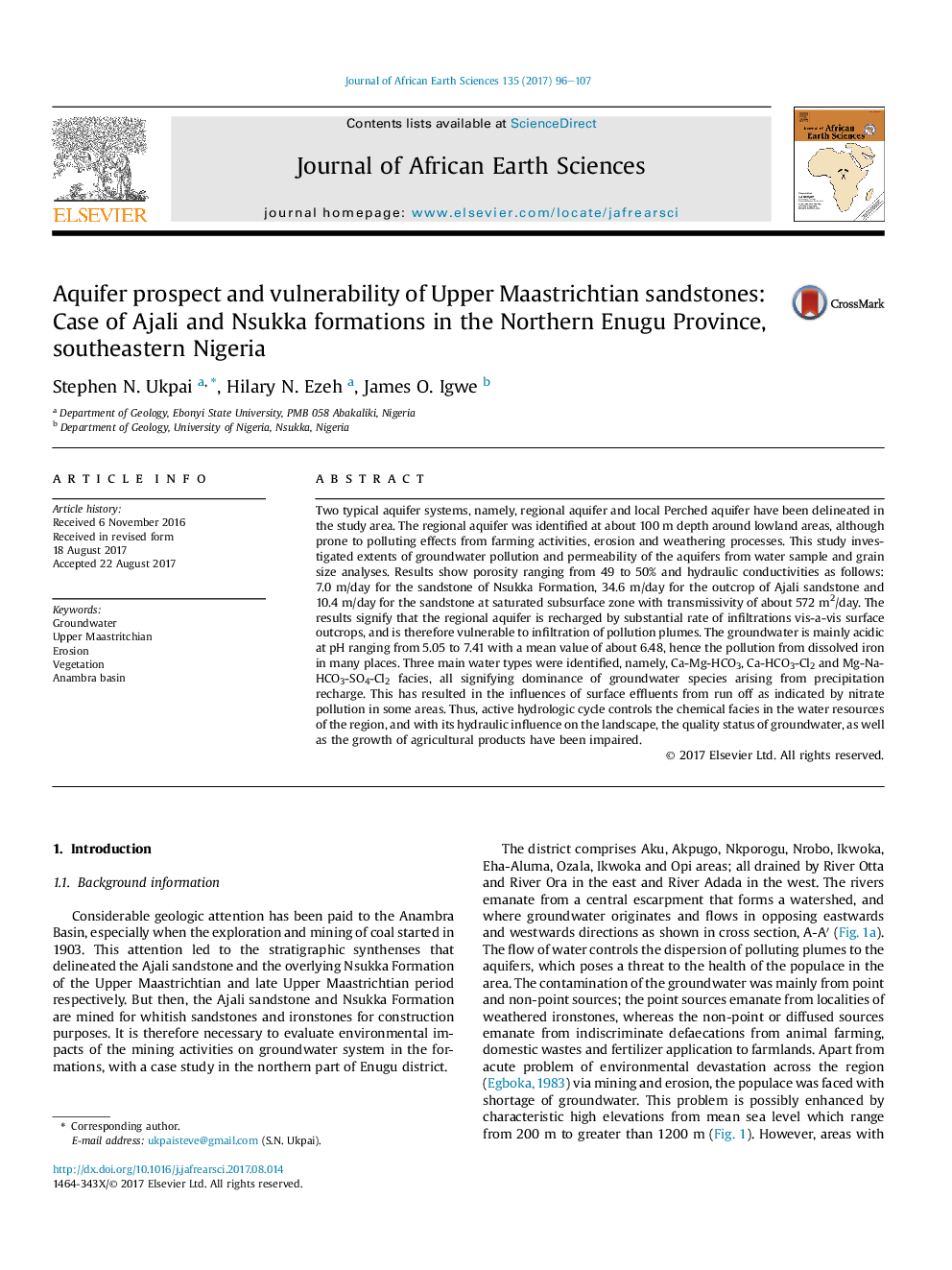| Article ID | Journal | Published Year | Pages | File Type |
|---|---|---|---|---|
| 5785507 | Journal of African Earth Sciences | 2017 | 12 Pages |
Abstract
Two typical aquifer systems, namely, regional aquifer and local Perched aquifer have been delineated in the study area. The regional aquifer was identified at about 100Â m depth around lowland areas, although prone to polluting effects from farming activities, erosion and weathering processes. This study investigated extents of groundwater pollution and permeability of the aquifers from water sample and grain size analyses. Results show porosity ranging from 49 to 50% and hydraulic conductivities as follows: 7.0Â m/day for the sandstone of Nsukka Formation, 34.6Â m/day for the outcrop of Ajali sandstone and 10.4Â m/day for the sandstone at saturated subsurface zone with transmissivity of about 572Â m2/day. The results signify that the regional aquifer is recharged by substantial rate of infiltrations vis-a-vis surface outcrops, and is therefore vulnerable to infiltration of pollution plumes. The groundwater is mainly acidic at pH ranging from 5.05 to 7.41 with a mean value of about 6.48, hence the pollution from dissolved iron in many places. Three main water types were identified, namely, Ca-Mg-HCO3, Ca-HCO3-Cl2 and Mg-Na-HCO3-SO4-Cl2 facies, all signifying dominance of groundwater species arising from precipitation recharge. This has resulted in the influences of surface effluents from run off as indicated by nitrate pollution in some areas. Thus, active hydrologic cycle controls the chemical facies in the water resources of the region, and with its hydraulic influence on the landscape, the quality status of groundwater, as well as the growth of agricultural products have been impaired.
Related Topics
Physical Sciences and Engineering
Earth and Planetary Sciences
Geology
Authors
Stephen N. Ukpai, Hilary N. Ezeh, James O. Igwe,
